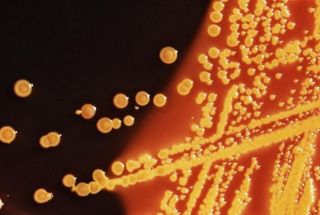Rise of Deadly Superbugs should 'Raise Red Flags' Everywhere

A pair of new studies confirms recent fears that bacteria are growing increasingly resistant to drugs and that you can be infected anywhere.
The number of cases of "superbugs," as researchers call them, has been increasingly steadily in recent years, the reports conclude.
The best medicine? Wash your hands a lot.
Both studies will be detailed in the June 15 issue of the journal Clinical Infectious Diseases.
Over-prescription
The deadly microscopic creatures evolve to deal with antibiotics, such as penicillin, partly because doctors prescribe the medications inappropriately, scientists say. When antibiotics are used for non-bacterial illnesses, or when prescriptions are not taken for the full cycle, the bugs that endure pass on their drug-resistant traits to subsequent generations.
One of the most vexing superbugs is methicillin-resistant Staphylococcus aureus, or MRSA. This bacteria used to be acquired mostly in hospitals, but now more people are getting it elsewhere. It can cause skin infections, severe bloodstream infections and even death.
Sign up for the Live Science daily newsletter now
Get the world’s most fascinating discoveries delivered straight to your inbox.
Researchers at the Baylor College of Medicine and Texas Children's Hospital found that over three years, the number of MRSA infections acquired outside hospitals in Texas had more than doubled. Researchers said the study should "raise red flags for health care workers everywhere."
"There have been deaths related to this organism, although the vast number are skin and soft tissue infections," said lead researcher Sheldon Kaplan.
Wash your hands
Avoiding MRSA infections is surprisingly simple: Follow Mom's advice.
"If you get a cut or an abrasion, try to keep it clean and dry" Kaplan said, and don't share towels or washcloths. Most importantly, he said, "Wash hands, wash hands, wash hands."
A study released in March found standard soap and 10 seconds of scrubbing to be among the most effective ways to get rid of bacteria.
Other bacteria have come to resist multiple drugs.
And if regular drug-resistant bacteria weren't bad enough, some bacteria have become multidrug resistant (MDR).
What if nothing works?
Researchers at the Beth Israel Deaconess Medical Center and Harvard Medical School studied the prevalence of bacteria resistant to three or more drugs over a six-year period. From 1998 to 2003, there was a significant increase in the incidence of patients carrying multidrug resistant (MDR) bacteria when they were admitted. Tree of the four species of MDR bacteria that the researchers examined, including E. coli, saw rising numbers of cases.
"We need to learn more about ways to prevent the spread of multidrug resistance," said Aurora Pop-Vicas, lead author of the second study. "What everybody wants to avoid is having an infection with an MDR bacteria resistant to all the antibiotics currently available."
Both studies were announced Monday. They mirror findings released in April by the U.S. Centers for Disease Control and Prevention, which found 17 percent of drug-resistant staph infections in three regions were caught outside hospitals.
Related Stories

